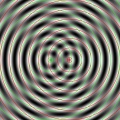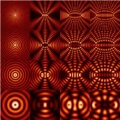Difference between revisions of "Interference"
Jump to navigation
Jump to search
(username removed) |
|||
| Line 2: | Line 2: | ||
== Description == | == Description == | ||
| − | The overlap of two or more wave of light to form a new wave pattern. Interference can be contructive, where the amplitude of the two waves add to form a greater signal, or destructive, where the overall amplitude of the two waves is less than the sum of the individual components. A [ | + | The overlap of two or more wave of light to form a new wave pattern. Interference can be contructive, where the amplitude of the two waves add to form a greater signal, or destructive, where the overall amplitude of the two waves is less than the sum of the individual components. A [[moiré pattern]] is an example of interference. |
== Synonyms and Related Terms == | == Synonyms and Related Terms == | ||
Revision as of 14:20, 16 January 2014
Description
The overlap of two or more wave of light to form a new wave pattern. Interference can be contructive, where the amplitude of the two waves add to form a greater signal, or destructive, where the overall amplitude of the two waves is less than the sum of the individual components. A Moiré pattern is an example of interference.
Synonyms and Related Terms
interferens (Dan., Sven.); Interferenz (Deut.); interferencia (Esp.); interférence (Fr.); interferentie (Ned.); interferencja (Pol.); interferência (Port.);
Additional Images
Authority
- Walter C. McCrone, John Gustave Delly, The Particle Atlas, W. McCrone Associates, Chicago, IV, 1972
- Wikipedia, the free encyclopedia, at http://www.wikipedia.com Comment: http://en.wikipedia.org/wiki/Interference (Accessed Sept. 20, 2005)


